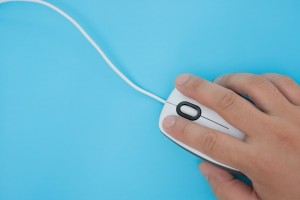If you have an iPhone, Apple’s weekly Screen Time report can be eye-opening. Did I really pick up my phone 36 times and spend 7 hours on social media? You might be tempted to blame the phone as the cause of your distraction, especially if you have notifications enabled. The root cause, however, is your relationship with technology—one that’s possible to change, says Dandapani, a Hindu priest, former monk, and author of The Power of Unwavering Focus.
“The problem is that people haven’t defined the purpose of the smartphone in their life,” he says. “I am quite clear on my purpose in life, and my purpose has defined my priorities. Because I’m clear on my purpose and my priorities, I can look at the smartphone and say, ‘How can this smartphone serve me in living a purpose-focused life?’”
Dandapani looks at his phone the same way he looks at tools for his garden. “I have a few shovels in the shed, and I only use a shovel when I need to dig a hole to plant a tree,” he says. “The rest of the time, the shovel stays in the shed.”
The same is true for his phone. “I don’t pick up the phone unless it’s helping me connect with my priorities,” he explains. “Define what it is you want. Then you can see how technology will align with you. You can make decisions as to what apps you need. What notifications you need. When and how to interact with your phone will become obvious and clear. Once you define the purpose and relationship, it’s easier to manage technology. But if I don’t have that purpose and relationship defined, then every time it chimes, I respond.”

Defining Your Purpose
Defining your purpose and figuring out what you want in life requires reflection, a process that can be quite challenging when you’re constantly distracted.
“Most people don’t spend time in self-reflection,” says Dandapani. “They’ll spend two hours with a friend, but they won’t spend two hours with themselves. When people spend time with themselves, they’re reading a book or listening to music. How about listening to your own thoughts and what it is you want? . . . If you don’t spend time with yourself, you won’t know.”
Self-reflection requires focus, turning your gaze inward long enough to learn what you really want. The problem is that many of us are looking for a fast solution, says Dandapani.
“There’s no quick fix,” he says. “We live in this world that trains us to be going from one thing to another. It’s 60-second TikTok videos that move to the next. If you do that for 3 or 4 hours, you’re training your mind to be on one thing for only 60 seconds. Even if you sit to self-reflect, you can only self-reflect for 60 seconds because that’s the pattern you’ve created in your mind.”
Building Focus
To improve your focus, you need to practice concentration. Instead of meditating, though, Dandapani recommends starting with the nonnegotiable, reoccurring events in an average day. For example, you may speak to your spouse or partner a cumulative total of two hours a day in five- or 20-minute increments.
“Every time I speak with my wife, I give her my undivided attention,” says Dandapani. “I keep my awareness on her. If my mind starts to drift away as she’s speaking, I bring it back to her. I’m relentless with this practice.”
In a day, you can clock in two hours of practicing concentration. After six months, you’ll have better focus. “We’re masters at distraction because we practice it 8 to 10 hours a day,” says Dandapani. “Practice concentration instead of distraction.”
When you can practice concentration instead of distraction, you’ll be able to enter periods of self-reflection. You can define your purpose and priorities and change your relationship with your smartphone. “Figure out what it is you want in life and how technology can serve you,” says Dandapani. “Smartphones aren’t to blame. What is to blame is the inability to exercise discipline around their use.”
(21)
Report Post








